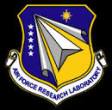AFRL posts BAA for Improved Networking through Embedded Processing and Sensing
 On July 18, the Air Force Research Laboratory posted a broad agency announcement for Improved Networking through Embedded Processing and Sensing (BAA-AFRL-RIK-2015-0007). For funding in FY 19, the agency recommends that white papers be submitted by November 1, 2018.
On July 18, the Air Force Research Laboratory posted a broad agency announcement for Improved Networking through Embedded Processing and Sensing (BAA-AFRL-RIK-2015-0007). For funding in FY 19, the agency recommends that white papers be submitted by November 1, 2018.
The Air Force Research Laboratory – Information Directorate (AFRL/RI) is soliciting white papers under this BAA for research, design, development, test, evaluation and experimentation of innovative technologies and techniques for Improved Networking through Embedded Processing and Sensing.
The objective of the BAA is to develop, demonstrate, and evaluate new sources and methods for improving network connectivity and stability through embedded processing and sensing. This effort is expected to provide research and development activities to enhance warfighter mission capabilities and advance baseline performance beyond what is currently considered satisfactory. Under the proposed effort, it is anticipated that improved network connectivity research and development will be conducted in support of Command & Control (C2) operations.
Efforts under this program are expected to provide the DoD and mission partners with system network enhancements that provide the flexibility required to adapt to and operate in contested, congested, or intermittent environments. The framework will provide an infrastructure that is extensible to all levels of the battlespace, integrating both legacy, current, and next generation communication technologies. Enterprise network resource analyses and planning should be taken into consideration when designing this framework.
Research efforts under this program are expected to result in improved capabilities, concepts, and applications addressing DoD and mission partners’ communication network resiliency problems. The effectiveness of the enhancements to software, systems, and sensors currently in operational use will be assessed through testing and evaluation activities. Technology innovations that deliver new or improved operational capabilities are of high interest. Offerors are encouraged to describe the pre-conditions that are necessary for the proposed techniques to work effectively.
Work is encouraged in, but not limited to, these focus areas:
1. Network Sensing Technologies
• Develop methods, models, and rigorous semantics for interoperability and integration across heterogeneous systems.
• Develop methods for sensing and data processing to allow both wired and wireless networks to self-organize into a distributed network topology.
• Demonstrate, test, and measure improved performance of the designed interconnected sensors, actuators, and component networks.
2. Network Embedded Processing
• Develop information management capabilities at multiple OSI (Open System Interconnection) layers to support the integration of different protocols used in identified networks
• Develop models and algorithms that optimize in-network processing in terms of computation and communication, and analyze resource usage for the purpose of extending the lifetime of network processors.
• Demonstrate, test, and evaluate the hardware and software performance of the proposed architecture.
3. Distributed Control
• Integrate and test cyber warfare and knowledge management technologies and techniques. This includes producing mission needs analyses and risk and vulnerability assessments.
• Enable transition of data-sharing and collaboration frameworks across the government to achieve greater levels of situational awareness, and enable more accurate and timely decision-making.
• Develop systems management technologies to enable strategic operational, tactical level C2 of current and future architectures, ensuring connectivity and maximizing effectiveness of operations in a contested environment.
• Develop network architectures designed for continuous operations in the face of uncertain C2 capabilities. Include real-time adaptability mechanisms for planning strike, Intelligence, Surveillance, Recognizance (ISR) and Electronic Warfare (EW) missions.
Full information is available here.
Source: FedBizOpps






